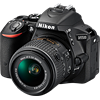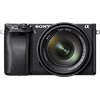Main
Model
Price
Advantages
launch
Announced
Body type
Camera subcategory
Sensor
Effective pixels
Max resolution
Sensor size
Sensor type
Processor
Image ratio w:h
Other resolutions
Sensor photo detectors
Image
ISO
White balance presets
Custom white balance
Image stabilization
Uncompressed format
JPEG quality levels
Boosted ISO (maximum)
Photography features
Minimum shutter speed
Maximum shutter speed
Aperture priority
Shutter priority
Manual exposure mode
Subject / scene modes
Built-in flash
Flash range
External flash
Flash modes
Continuous drive
Self-timer
Metering modes
Exposure compensation
AE Bracketing
WB Bracketing
Screen / viewfinder
Articulated LCD
Screen size
Screen dots
Touch screen
Screen type
Live view
Viewfinder type
Viewfinder coverage
Viewfinder magnification
Viewfinder resolution
Videography features
Resolutions
File Format
Microphone
Speaker
Videography notes
Optics & Focus
Autofocus
Digital zoom
Manual focus
Number of focus points
Lens mount
Focal length multiplier
Physical
Weight (inc. batteries)
Dimensions
Environmentally sealed
Battery
Battery details
Battery Life (CIPA)
Storage
Storage types
Connectivity
USB
HDMI
Wireless
Wireless notes
Remote control
Microphone port
Headphone port
Other features
Orientation sensor
Timelapse recording
GPS
Samples
Videos
Summary
The Alpha a6300 provides more powerful 2x-8x digital zoom. The Sony Alpha a6300 has more number of focus points than the Nikon D5500: 425 vs 39. More focus points means less risk of losing focus lock during tracking a moving object.
The Nikon D5500 is equipped with articulated display that will let the photographer to take photos from any odd angle. The Nikon D5500 screen is better as it has more number of screen dots 1,037,000 in compare to 921,600 dots of the Sony Alpha a6300 display. The higher dot count screen is better for reviewing pictures on your camera. The Nikon D5500 has Yes inch touch screen that is larger in comparison to No inch screen of the Sony Alpha a6300.
The Sony Alpha a6300 is environmentally sealed i.e. the camera provides protection from the elements harmful to the electronics – humidity, water, snow and dust. The Nikon D5500 battery life is better than the Sony Alpha a6300 battery life. According to CIPA standards the photographer will be able to produce 820 shots with the D5500 and only 400 with the Alpha a6300. The Alpha a6300 weighs 404g which is 16g lighter in comparison with the weight of the Nikon D5500.
The Nikon D5500 has 7 advantages and the Sony Alpha a6300 only 6 so the D5500 becomes the best buy. Get the lowest price on Amazon.


